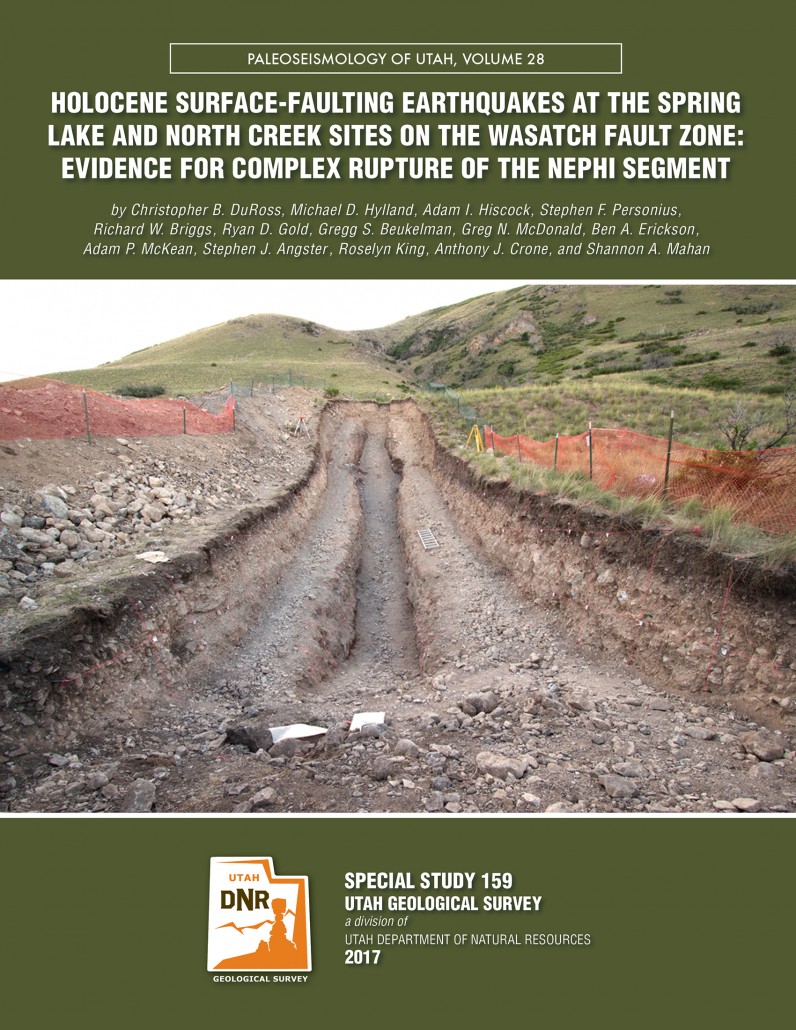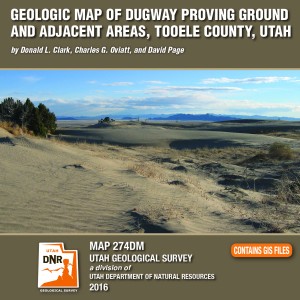Holocene Surface-Faulting Earthquakes at the Spring Lake and North Creek Sites on the Wasatch Fault Zone: Evidence for Complex rupture of the Nephi Segment
By: Christopher B. DuRoss, Michael D. Hylland, Adam I. Hiscock, Stephen F. Personius, Richard W. Briggs, Ryan D. Gold, Gregg S. Beukelman, Greg N. McDonald, Ben A. Erickson, Adam P. McKean, Stephen J. Angster, Roselyn King, Anthony J. Crone, and Shannon A. Mahan
This 44-page report presents new data from the Spring Lake and North Creek trench sites on the Nephi segment of the Wasatch fault zone. We use paleoseismic data from these sites to refine Holocene earthquake chronologies for the northern and southern strands of the segment, calculate earthquake recurrence and fault slip rates, and assess whether the strands rupture independently or synchronously in large earthquakes. At the Spring Lake site, at least five to seven earthquakes occurred since ~13.1 ka, yielding a mean Holocene recurrence of ~1.2–1.5 kyr; at the North Creek site, at least five earthquakes occurred since ~4.7 ka, yielding a mean recurrence ~1.1–1.3 kyr. We integrate these results with previous paleoseismic data for the segment, discuss the timing and recurrence of large Nephi segment earthquakes, and evaluate possible models of surface-fault rupture involving the two fault strands.











